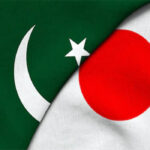ISLAMABAD, Aug 13 (APP):Governor State Bank of Pakistan (SBP), Reza Baqir said Friday that the foreign exchange reserves of the central bank would reach to the historic high level once the country receives $2.77 billion on August 23 from International Monetary Fund’s (IMF) general allocations of $ 650 billion that had been approved to boost global liquidity amid the coronavirus pandemic.
Addressing a press conference, Baqir said that earlier, the highest reserves of $19.5 billion were recorded in year 2016.
Appreciating the IMF’s step for providing global liquidity, the SBP Governor said that this was a happy news, which he said would help improve country’s reserves and have very positive impact on various economic indicators.
He said the increase in reserves would help provide coverage to imports into the country, saying that since the country was currently in recovery mode, hence needed more imports.
He said that the inclusion of $2.77 billion would also help enhance the net international reserves of the country, which is also positive sign for the country’s economy.
It is pertinent to mention here that the Board of Governors of the IMF had approved a general allocation of Special Drawing Rights (SDRs) equivalent to US$650 billion (about SDR 456 billion) to boost global liquidity.
The allocation would benefit all members, address the long-term global need for reserves, build confidence, and foster the resilience and stability of the global economy.
It would particularly help most vulnerable countries struggling to cope with the impact of the COVID-19 crisis.
Referring to apprehensions raised by some of the economists about rising trend of Current Account Deficit, Governor SBP Reza Baqir said the deficit would likely to remain at 2-3% of GDP during current year which is a moderate ratio.
Moderate increase is a good sign for economy provided that it should remain sustainable, he said adding “We were in deep scramble in 2017-18 when our CAD went up to $19 billion or 6% of GDP”.
The Governor said there were three signs when the economy could be in trouble due to rising current account deficit. First alarming bell, he said was that amid growing CAD, fluctuation in the exchange rate was high and non-adjustable.
Similarly he said when the foreign exchange reserves were at the lowest rate then the growing current account deficit could hurt the economy.
He said about three years ago all the three alarming bells were ringing as the exchange rate was not making two-way adjustments and the country’s forex reserves were also at very low level.
However, he said now the situation was other way round as the country’s forex reserves were going to be at historic highs coupled with a stable market based exchange rate that is making two way adjustments.
He said about two years ago our economy was in recession mode but now it had come out of the stabilization phase and entered the growth phase.
Similarly he said about three months ago, Pakistan’s GDP growth rate was being foreseen at 2% but now it had been proved that it had grew by 4% in the previous year while in the current year, according to the SBP estimation it would grow by 4-5%.
“Our economy has completed the stabilization phase successfully and now it has entered the growth phase which is evident with the fact that our economy is now growing at over 4% rate”, he said adding that the country’s economy had witnessed a complete turnaround.
To a question, the governor said that a higher growth during the past government was unsustainable because it suddenly went down and we had to go again to the International Monetary Fund (IMF) for a new programme.
However he said this time growth seemed to be a sustainable and it would further rise in days to come.
Elaborating the reasons behind a sustainable growth, the governor said Pakistan’s exchange rate was now a market based and that its forex reserves were also going up. Furthermore, he said the IMF also accepted that Pakistan had showed tremendous performance in increasing the net international reserves
Replying to another question, Reza Baqir said after the outbreak of COVID, the average international debt to GDP was increased by around 10%, however Pakistan’s debt to GDP ratio remained in control and increased marginally.
He said the World Bank had openly admitted that Pakistan’s Ehsaas was the world’s largest programme.
He also appreciated the role played by the National Command and Operation Center (NCOC) in controlling COVID in Pakistan successfully.The Governor SBP said that sustainable economic development was the top priority of the government and all the economic indicators and the government economic policies are moving in the right direction.
He expressed his hope that the current economic growth and development would be sustainable in the future as well, because “We have moved towards economic stability for better economic growth.”
He said that during the COVID-19 pandemic, the debt to GDP of all countries increased but Pakistan managed this issue with sound economic policies.
He said that Pakistan’s net reserves were increasing which was a good economic trend and Pakistan appeared as emerging market with a growing reputation in the international market.
He said that during previous fiscal year 2020-21, Pakistan’s remittance increased by 25 percent for the first time in our economic history.
He said that the country’s exports of all potential sectors are increasing day by day.
He said that economic team was analyzing all the economic indicators on a monthly basis after which various sectors are also be reviewed.
![]()







